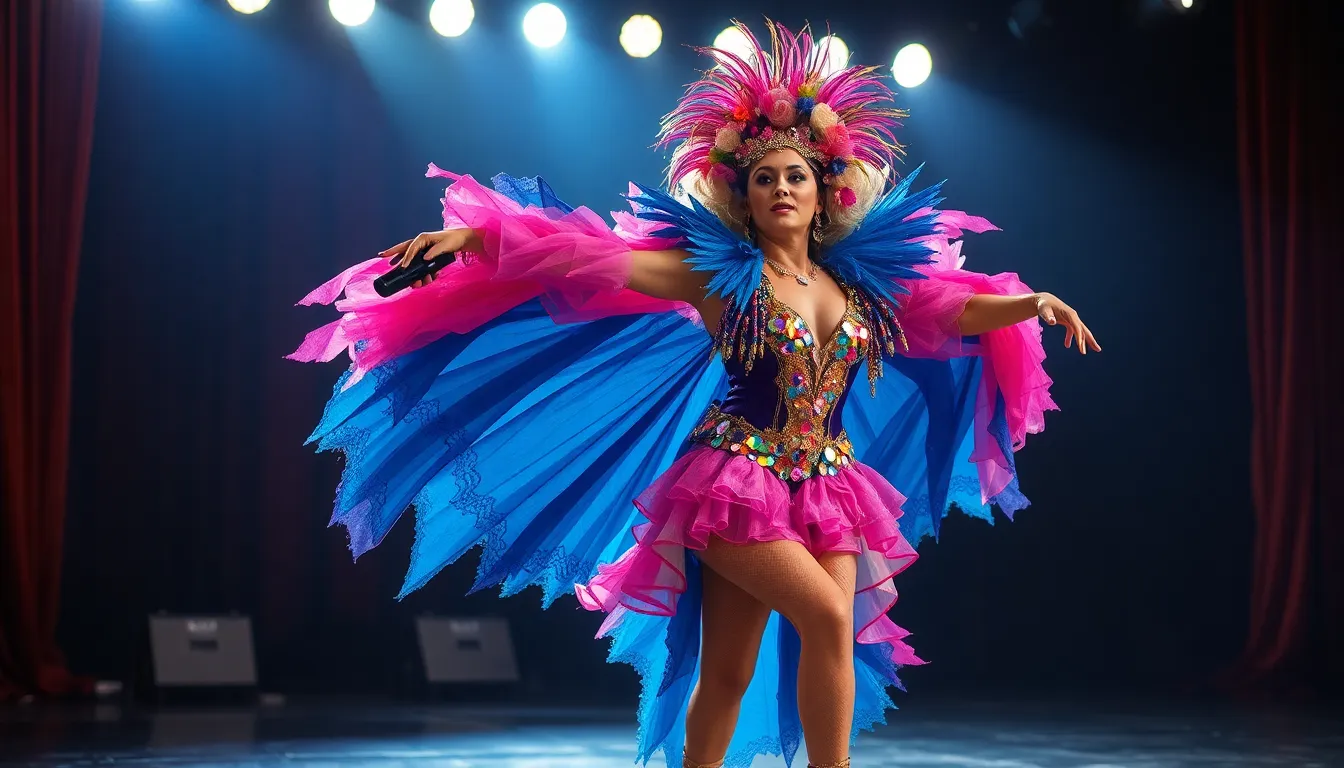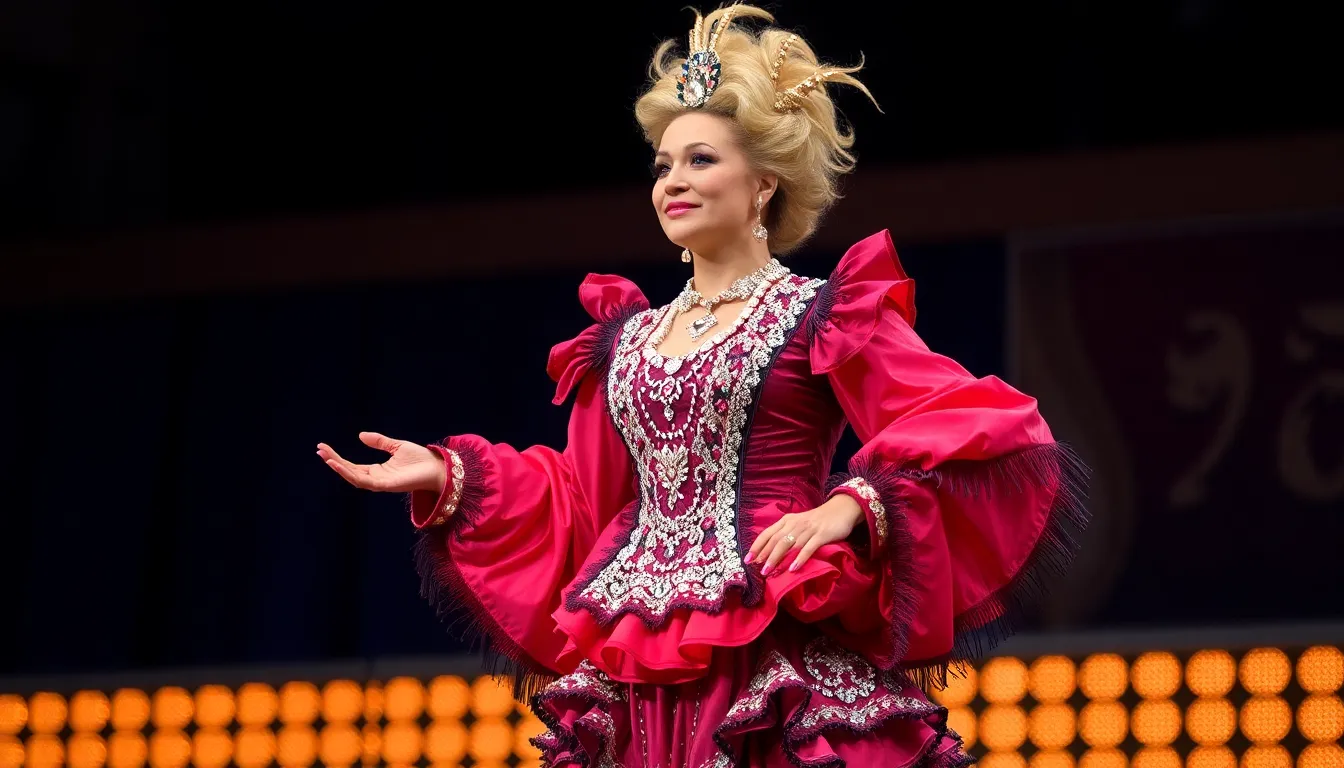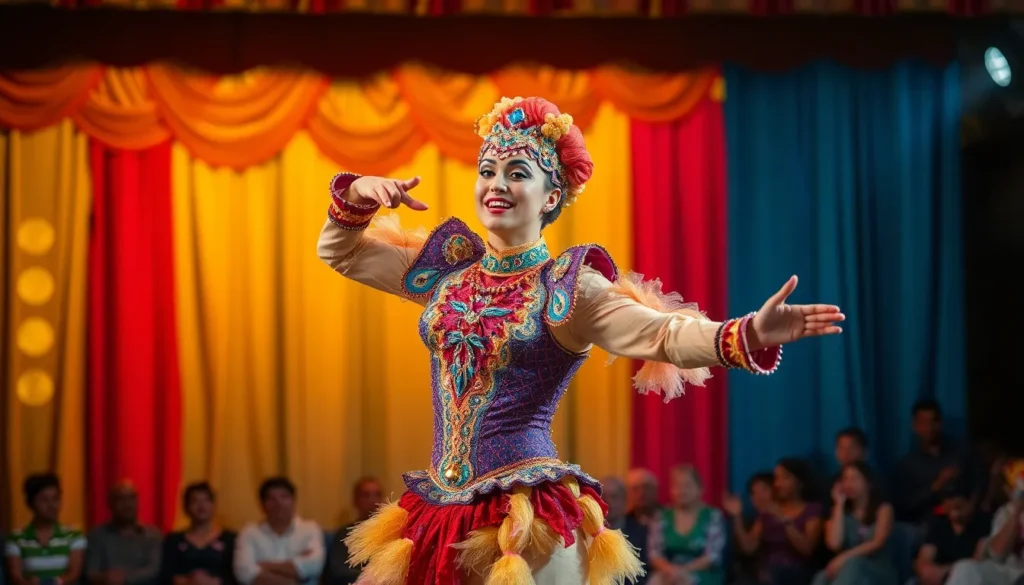Table of Contents
ToggleEver watched a quick change artist and wondered if they’ve got a secret portal to Narnia? Those dazzling performers seem to defy the laws of time and fashion, transforming outfits faster than you can say “abracadabra.” It’s not magic—it’s a blend of skill, strategy, and a sprinkle of showbiz flair that keeps audiences on the edge of their seats.
Overview of Quick Change Artists
Quick change artists perform captivating acts that showcase their ability to switch costumes within seconds. This skillful art form involves a mix of speed, technique, and meticulously planned wardrobe strategies. Many quick change artists utilize specially designed garments that allow for rapid changes. These garments often feature hidden fastenings, lightweight materials, and an array of colors.
Precision plays a crucial role in their performances. Each outfit is typically created to easily slip on and off, minimizing the time spent on the transition. Some artists incorporate elements like zippers, magnets, and Velcro to enhance this efficiency. As a result, audiences remain engaged and astonished by the seamless transitions.
Quick change acts are often accompanied by music and choreographed movements. This synchronization helps distract the audience while the transformations occur. The combination of visuals and sound creates a dynamic experience, amplifying the sense of wonder.
In addition to costumes, quick change artists also master stage presence. They employ facial expressions and body language to draw the audience’s attention away from the costume changes. Effective storytelling and character development contribute to the overall impact of the performance.
Overall, quick change artistry requires dedication, creativity, and a deep understanding of timing. Performers devote countless hours to practice, perfecting their techniques to ensure smooth transitions. Through innovation and artistry, they continue to mesmerize audiences worldwide.
Techniques Used by Quick Change Artists


Quick change artists utilize various techniques to create their mesmerizing performances. Central to their craft are costume design and precise timing.
Costume Design and Functionality
Costume design combines functionality with visual appeal. Each outfit incorporates hidden fastenings like zippers, magnets, or Velcro, enabling rapid changes. Bright colors and lightweight materials enhance ease of movement. Specific designs often feature layers, allowing a performer to shed or add garments swiftly. Many costumes also include intricate details or embellishments that distract the audience, maintaining the illusion of magic. This deliberate attention to design ensures seamless transitions, essential for an impactful performance.
Timing and Coordination
Timing plays a crucial role in quick change performances. Each transition relies on precise coordination between movements and musical cues. Performers practice extensively to master these elements, ensuring they execute each change flawlessly. Choreographed routines often dictate when to switch outfits, allowing seamless integration into the act. Synchronizing with the music provides rhythm, helping to mask the quick changes. Well-timed moments create tension and surprise, captivating the audience’s attention while the transitions occur.
The Psychology of Quick Change
Understanding the psychology behind quick change performances reveals the intricate relationship between the artist and the audience. Audience perception plays a significant role in how the transformation is experienced.
Audience Perception
Quick change artists rely on audience perceptions to amplify their impact. Spectators often believe that seeing costume changes occurs in a matter of seconds creates an illusion of magic. Bright colors and dynamic movements draw their attention, enhancing the overall experience. Artists carefully design performances to exploit curiosity, making viewers question how such rapid changes happen. Emotional engagement plays a crucial part, as astonishment leads to applause and cheers. Effective performances keep audiences captivated, creating memorable experiences that linger long after the show.
Performance Anxiety and Stage Presence
Performance anxiety impacts many entertainers, but quick change artists manage it uniquely. They cultivate a commanding stage presence to overshadow their nerves. Each performer develops their unique strategies to maintain focus during rapid transitions. Deep breaths and rehearsed movements help mitigate anxiety, ensuring smooth costume changes. Expressive body language conveys confidence and poise, allowing artists to connect with the audience. Successful shows often rely on practiced routines that build familiarity, reducing uncertainty. Commitment to performance amplifies stage presence, convincing spectators that what they witness is pure magic.
Famous Quick Change Artists and Their Styles
Numerous artists stand out in the realm of quick change performances, each showcasing distinct styles that mesmerize audiences.
Notable Performances
Renowned quick change artist Franz Harary captivates with elaborate routines and theatrical flair. In stunning showcases, he transforms within seconds, leaving viewers breathless. Another impressive performer, The Amazing Johnathan, combines humor and quick changes to engage and entertain audiences in a unique way. Internationally acclaimed duo, Jess and Paul, utilizes synchronized choreography and costume changes to create a seamless experience. Their performances feature intricate movements and vibrant costumes that enhance the speed of transitions. Each act reflects a commitment to creativity, inspiring emerging artists in the field.
Impact on Entertainment
Quick change artists significantly influence the entertainment industry, blending magic with fashion and performance art. Audiences seek out their acts in theaters and variety shows, drawn to the excitement of rapid transformations. This art form enriches live performances by introducing elements of surprise and excitement. Famous quick change acts often appear in talent competitions, securing spots on global platforms like “America’s Got Talent.” Their performances spark trends in stage design and costume innovation, inspiring designers to explore new materials and concepts. The impact extends beyond mere entertainment, inspiring future generations of performers to embrace creativity and originality in their acts.







